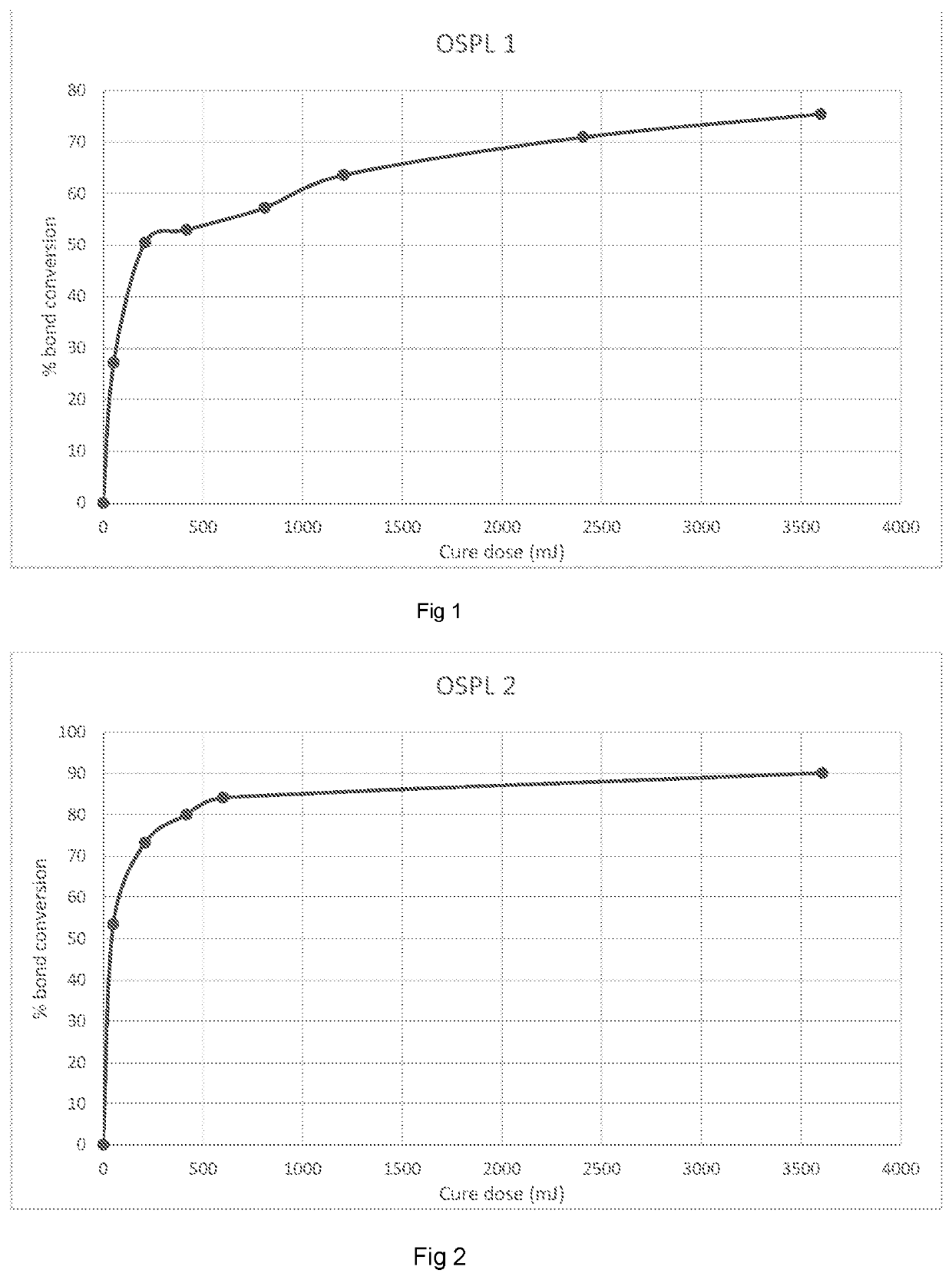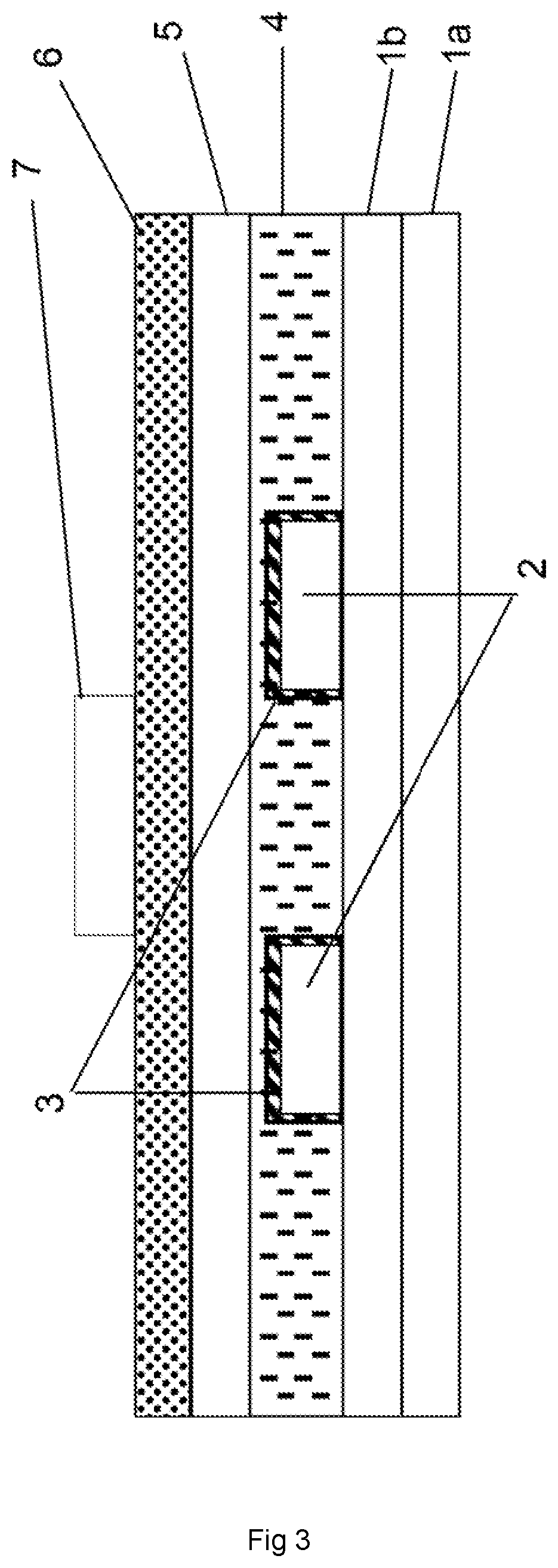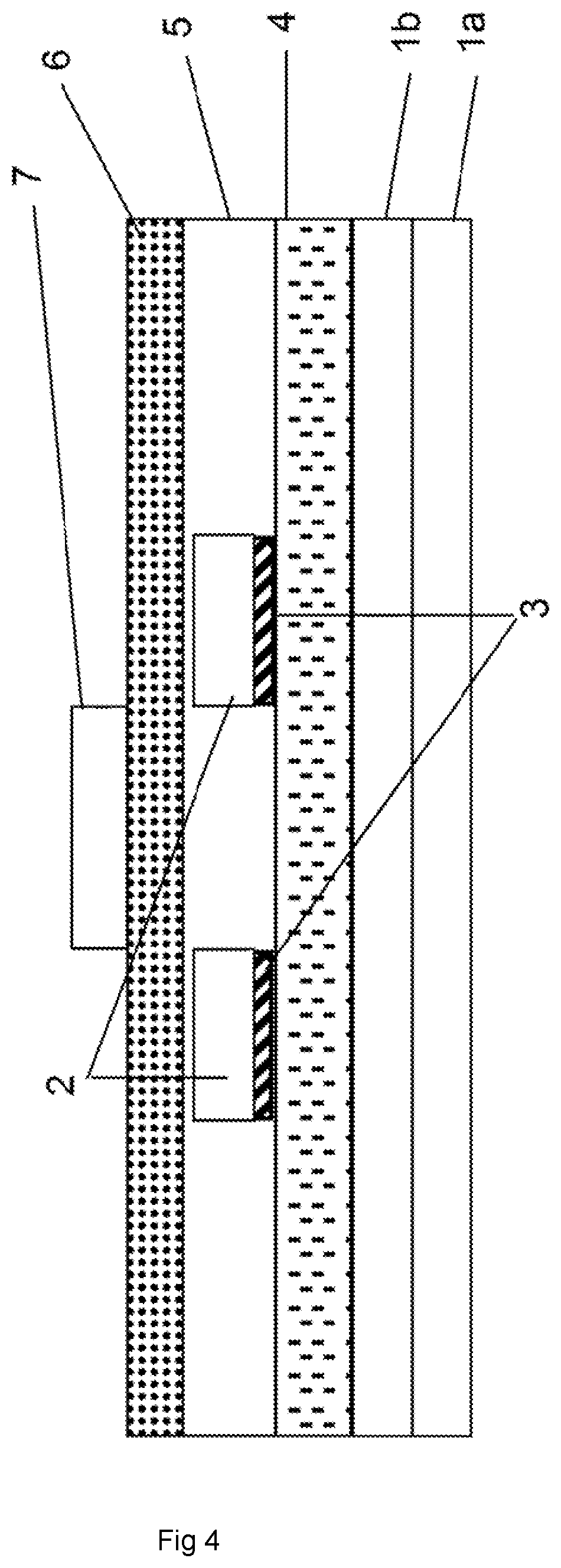Sputter protective layer for organic electronic devices
a technology of organic electronic devices and protective layers, which is applied in the direction of solid-state devices, semiconductor devices, coatings, etc., can solve the problems of difficult scaling up of evaporation, low throughput, and widespread use of industrial manufacturing processes, so as to improve sub-threshold swing, reduce the voltage of turn on, and reduce the threshold voltage value
- Summary
- Abstract
- Description
- Claims
- Application Information
AI Technical Summary
Benefits of technology
Problems solved by technology
Method used
Image
Examples
Embodiment Construction
e organic gate insulator (OGI) layer comprises a low permittivity polymer having a dielectric constant (k)3.3, more preferably >3.5, more preferably >4.0 @1000 Hz.
[0048]Preferably, the OSPL has a permittivity (k)>3.3 @ 1000 Hz, preferably k>3.5 and more preferably >4.0 at 1000 Hz. Where more than one OSPL is present, they may have different permittivity to one another. This may be affected by virtue of their relative chemical composition.
[0049]Some examples of low permittivity polymers preferably include perfluoropolymers, benzocyclobutene polymers (BCB), parylene, polyvinylidene fluoride (PVDF) polymers, cyclic olefin copolymers (e.g. norbornene, TOPAS™) polymers, adamantyl polymers, perfluorocyclobutylidene polymers (PFCB), polymethylsiloxane (PDMS), and mixtures thereof.
[0050]The crosslinkable OSPL is coated on top of the OGI using any solution coating technique, preferably including spin coating, spray coating, slot-die coating, ink jet printing. The OSPL is crosslinked to provi...
PUM
| Property | Measurement | Unit |
|---|---|---|
| thick | aaaaa | aaaaa |
| surface free energy | aaaaa | aaaaa |
| surface free energy | aaaaa | aaaaa |
Abstract
Description
Claims
Application Information
 Login to View More
Login to View More - R&D
- Intellectual Property
- Life Sciences
- Materials
- Tech Scout
- Unparalleled Data Quality
- Higher Quality Content
- 60% Fewer Hallucinations
Browse by: Latest US Patents, China's latest patents, Technical Efficacy Thesaurus, Application Domain, Technology Topic, Popular Technical Reports.
© 2025 PatSnap. All rights reserved.Legal|Privacy policy|Modern Slavery Act Transparency Statement|Sitemap|About US| Contact US: help@patsnap.com



